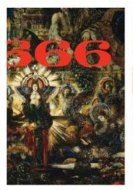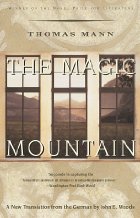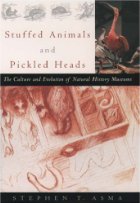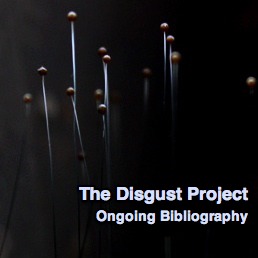
With the third section of Roberto Bolaño's 2666, I started to feel a movement and symmetry in the novel as a whole. Moving away from the semi-insider Amalfitano's interior landscape, The Part About Fate returns to an outsider's perspective: this time, we see the crimes' fallout from the perspective of an African-American political reporter for the Harlem magazine Black Dawn. This sandwiching of Amalfitano's story of madness between two more exterior narratives made me feel like the middle story was a kind of tunnel through which I squeezed, emerging into a transformed reality on the other side.
The world of Oscar Fate, protagonist of the section, is certainly different from the jet-setting milieu of the four academics in The Part About the Critics. Before his editor sends him to Mexico to cover a boxing match (after the unexpected death of the magazine's regular sports correspondent), we see Fate's late mother's apartment in Harlem, and his travels to a run-down section of Detroit to cover a speech by Barry Seaman, a fictionalized version of Black Panthers co-founder Bobby Seale. As a US reader, the mental atmosphere of this section was noticeably closer to home for me: racial identity politics were front and center in a way that wasn't true for the European intellectuals or for the Chilean professor working in Mexico. Suddenly, the familiar landscape of black versus white was in evidence. Fate is always conscious of certain people as black people: he goes to a film, for example, and notices how many black people and how many white people are acting in each scene. He thinks of his employer as "a magazine for brothers," and in one scene, where he unthinkingly identifies himself to a Mexican person as "an American," he later grills himself about why he hadn't said he was "African American":
Why didn't I say I was African American? Because I'm in a foreign country? But can I really consider myself to be in a foreign country when I could go walking back to my own country right now if I wanted, and it wouldn't even take very long? Does this mean that in some places I'm American and in some places I'm African American and in other places, by logical extension, I'm nobody?
I hadn't thought about identity politics in quite this way before, but it's an interesting point: it's obviously disorienting to feel that one's identity could be stripped away, or is more fluid than one anticipated. In Fate's particular case, that of an African American in Mexico, there is also a subtle layering of privilege going on. From the scenes in Detroit and Harlem, it's obvious that Fate is acutely aware of the racist structure of US society, and of what it means to be black within that structure. But south of the border, he finds himself transformed from an oppressed insider minority (African American) to a privileged outsider symbol of power (American). Not only does he suddenly find the economic and political might of the US behind him - just his ability to walk across the border whenever he chooses distinguishes him from most people he meets in Santa Teresa - but his press credentials open doors for him, despite his lack of experience as a sports correspondent and his inability to speak Spanish. Yet when he tries to exercise that power, by asking his editor for an extension so that he can stay in Santa Teresa and do some investigative reporting on the crimes being committed there, he again comes up against the racial politics of the United States: the editor refuses him the extension, arguing that none of the murdered women have been black. Fate, like Amalfitano with his madness-inducing geometry book, is caught in a double-bind, which spirals horribly toward the murders.
The style of this section was also different: whereas the first book feels to me, more than anything, like an homage to the novels of Vladimir Nabokov with a bit of David Lynch thrown in, the second two books describe a gradual slide into a more and more thoroughly Lynchian aesthetic. By halfway through The Part About Fate, this vibe was so strong that I was actually flashing to specific scenes from Inland Empire. (Indeed, the Lynch references are explicitly acknowledged a little farther along, in a postmodern assertion by a hotel clerk.) Take this passage:
The staircase ended in a green-carpeted hallway. At the end of the hallway there was an open door. Music was playing. The light that came from the room was green, too. Standing in the middle of the hallway was a skinny kid, who looked at him and then moved toward him. Fate thought he was going to be attacked and he prepared himself mentally to take the first punch. But the kid let him pass and then went down the stairs. His face was very serious, Fate remembered. Then he kept walking until he came to a room where he saw Chucho Flores talking on a cell phone. Next to him, sitting at a desk, was aman in his forties, dressed in a checkered suit and a bolo tie, who stared at Fate and gestured inquiringly. Chucho Flores caught the gesture and glanced toward the door.
"Come on in, Fate," he said.
The lamp hanging from the ceiling was green. Next to a window, sitting in an armchair, was Rosa Amalfitano. She had her legs crossed and she was smoking. When Fate came through the door she lifted her eyes and looked at him.
"We're doing some business here," said Chucho Flores.
Fate leaned against the wall, feeling short of breath. It's the green color, he thought.
"I see," he said.
Rosa Amalfitano seemed to be high.
Almost every element of this scene could be straight out of Twin Peaks: the dark hallway with the faint light at the end, the sinister green light, the checkered suit of the forty-something stranger, the stares of the room's inhabitants as Fate approaches, the beautiful woman with her legs crossed, smoking, who seems to be somehow impaired. It's a great atmosphere, and also, perhaps, reinforces the American-ness of 2666's third part, evoking a particular kind of bizarro LA noir that originates squarely north of the border. This Americanized lens eventually brings up the question of just how the hulking presence to the north of Santa Teresa is related to the crimes being committed there. Someone - or multiple people - are treating the lower-class women of Santa Teresa as disposable sub-human matter, murdering them and throwing their bodies in empty lots. But if the feminists of Santa Teresa are protesting corruption outside the police station, and Fate's Harlem editor doesn't view these women as worthy of notice because of the color of their skin, it starts to look like the killer isn't the only one whose ability to value human life is skewed. Amalfitano tells Fate toward the end of this section that "they're all mixed up in" the killings, and it's unclear whether he is referring to his daughter's group of friends, or to a more general "they."
Equally disturbing, on the Amalfitano front, is that as Fate is walking away from the house with Rosa, we see Amalfitano leaning against the sinister black Peregrino, chatting amicably with its driver after having just denied ever having seen him before. Is the owner of the Peregrino Marco Antonio Guerra? If it is, why does Amalfitano deny knowing him? And does this familiarity with the car's owner imply that Amalfitano himself is a member of the "they" who are "all mixed up in" the murders"? Sitting in a coffee shop just north of the border, Fate overhears a conversation fragment that reminded me strongly of Amalfitano's mental refusal to address the murders:
That said, words back then were mostly used in the art of avoidance, not of revelation. Maybe they revealed something all the same. I couldn't tell you.
What is revealed by Amalfitano's avoidance of the crimes? And does this scene shed new light on Guerra's strange declaration in Part 2 that "You have nothing to fear from me, Professor?"
I found The Part About Fate somewhat less funny than the first two books, but just as engaging. The sense of sinister foreboding builds in intensity throughout, delivering the reader to the threshold of The Part About the Crimes with an unnerving gasp. I keep waiting for the point at which I'll feel like taking a break from 2666, but it certainly hasn't happened yet.
Thoughts on Part 2: The Part About Amalfitano
Thoughts on Part 1: The Part About The Critics





